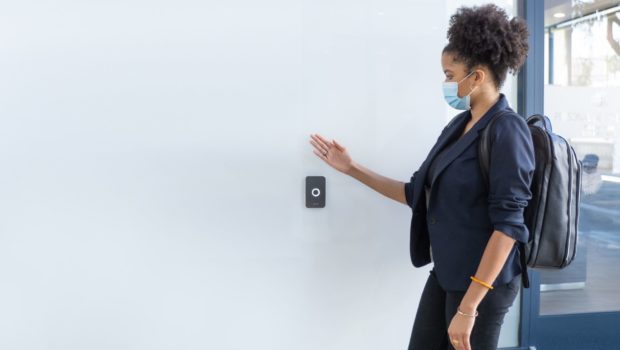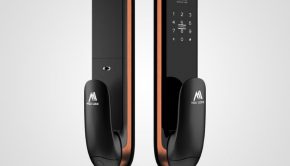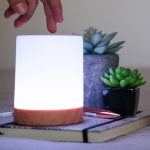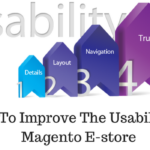9 Ways to Boost ROI on Keyless Door Entry Systems in the Post COVID-19 Era
It’s no secret that the workplace as we know it is changing. In the post-COVID era, offices need technology that can adapt at the drop of a hat. And when it comes to keeping buildings secure, flexible access control solutions are more important than ever. From accommodating flexible schedules and distributed teams, to eliminating as many shared touch points as possible, planning for better workplace security in a post-COVID world requires a tech-forward approach. When considering a more modern, keyless door entry system for business and office environments, these 9 tips can help ensure a smooth transition and future-proof your building.
Go mobile for efficient management
Many commercial keyless entry door locks and access systems also support encrypted key cards and fobs. While these credentials have better protection against fraud than outdated prox cards or metal keys, they still require more management than is optimal in the post-COVID era. Mobile-based keyless door entry systems use a smartphone app instead of a physical credential, which is not only more convenient for users, it’s actually easier to manage. There aren’t any physical credentials to order, track, or hand out to employees, and people are much less likely to lose their smartphone or leave it at home.
A cloud-based system also gives teams the benefit of managing user access from anywhere via one centralized platform. This means issuing and revoking credentials is instantaneous; new users access to the right set of doors immediately, and there’s no need to collect a badge from an employee before they leave the organization. When it comes to accommodating distributed teams, users only need one credential to access all authorized locations, and the cloud-based dashboard enables teams to adjust permissions on the fly to adapt to new schedules in real-time.
Opt for low-contact, high-tech solutions
The pandemic instantly heightened everyone’s awareness of the things they touch on a daily basis. A contactless access control system is a great way to offer peace of mind to anyone entering the office. However, not all systems support truly touchless experiences without compromising on security. Office keyless door entry systems that utilize mobile credentials are the best option for a contactless unlock, with some access control providers offering advanced motion-detection to trigger unlocks without even needing to open an app, and options to integrate with automatic door opening hardware or wireless door locks. The added benefit of upgrading to leading-edge touchless technology is that it’s not going anywhere. People love the magic feeling of unlocking and opening the door without touching anything, as it’s more convenient and creates a modern, tech-forward building experience.
Enable multi-factor authentication
To make sure your keyless door entry system has the best protection, always enable multi-factor authentication (MFA). As a best practice, MFA helps prevent unwanted access to your sensitive data and information. With many data breaches involving a physical breach as well, using a keyless door entry system with added authentication required for unlock helps mitigate potential threats. Mobile access control offers the greatest security at the door, with two-factor authentication (2FA) already built into the smartphones, making it harder for unauthorized users to gain entry.
MFA should also be used across your entire security system. Look for access control and video surveillance providers who use MFA as a company policy, and always ensure your own system administrators have MFA enabled to prevent potential hackers or bad actors from logging into admin accounts and accessing security data.
Take advantage of remote access features
With so many companies offering remote and flexible work arrangements, it’s paramount to have a security system that’s easily accessible, no matter where the team is. Remote access improves security monitoring by giving teams the ability to check what’s happening at the building from any device, at any given time. A keyless door entry system equipped with remote access and automatic alerts also means being able to triage security issues in real time. For example, if an employee is having trouble unlocking the door, the system will send a notification to the correct team members notifying them of an unsuccessful unlock attempt. They can then check the system activity, and even remotely unlock the door for the employee, all within minutes. Remote access reduces travel between facilities, enables faster response times, and improves security across the board.
Combine your physical and cyber security strategies
Nobody wants to be the target of a hacking event or data breach. With the average cost of a data breach topping $3.86M according to a 2020 IBM report, many businesses simply can’t afford to have less-than-stellar security in place. In the post-COVID era, a smart security strategy will address both physical and cyber security threats at the same time. By protecting physical spaces with access control and video surveillance, as well implementing logical access control for servers and cloud-based systems, organizations can safeguard confidential information and limit access to only those who should have it.
One key factor in a combined security strategy is compliance. Security and access control systems need to have detailed reporting to ensure auditing is fast and accurate, especially in the event of a potential breach. The faster the situation is remedied, the fewer the damages.
Do away with plastic ID badges
The fact is, most people simply don’t like having to wear or carry an ID badge. And in today’s digital world, they aren’t even needed! With a mobile badge, security staff can still get the visual verification needed to identify authorized individuals, without the plastic. A digital ID badge tied to mobile credentials also means one less thing for staff to manage and hand out, or collect from employees who are leaving. Plus, mobile badging makes access instant for new employees, and more convenient for everyday users.
Track occupancy to optimize space management
Yes, the pandemic created an immediate need for social distancing in the office. And yet, many organizations have been slow to adopt tools that automate and enforce social distancing for fear that the technology will be obsolete within a year. However, occupancy tracking tools have long-term benefits, too. Know who is accessing the space and when is important data for any property or office manager! A keyless access control system designed to automatically limit entry based on capacity limits is important right now, and can also give you deep insights into how spaces are being used over time. Occupancy data plays a vital role in making informed decisions about optimizing the space, whether you need to accommodate changes in staffing, or are trying to decide if certain building amenities are worth their investment.
For example, an office manager may use occupancy tracking data to determine the best days and times to host client meetings, or whether to convert the break room into additional workstations for better productivity. From a property manager viewpoint, they can look at access data to improve lease management, or see if the office gym might have better ROI as a conference space or new offices. With occupancy data being ingested into business intelligence tools, teams have a fuller picture of the space, taking the guesswork out of important decision making.
Implement automation at every level
Time is money. So why do so many businesses waste precious minutes with menial tasks? In the post-COVID office, efficiency is all-important. And with more IoT-connected devices and cloud-based systems than ever before, the smart buildings of the future are powered by automation. Choose office security systems that are smart, interoperable, and do the work for you. For example, a keyless door entry system integrated with office video surveillance can automatically alert security staff to a triggered event, such as a door forced open, and the team can check video footage and access activity from the same interface, and even activate a site lockdown for emergencies—saving time when it matters most. Your access control system should run on an open-architecture platform for seamless integration with tenant apps, video security systems, building management platforms, and even internal communication tools. Connected building systems can work together to make offices more sustainable, efficient, and productive.
Future-proof your largest investment
Office space comes at a premium, so replacing technology every few years just to keep up with the latest security features is a waste of resources. Outdated systems impede productivity, stifle innovation, and weaken security. A future-proof access control and physical security strategy prioritizes adaptable systems, which can roll out new features and enhance the office experience without compromising security or productivity. One of the advantages of cloud-based door security systems over on-premise solutions is the ability to update the software without on-site maintenance. Over-the-air upgrades mean new features and enhancements are rolled out automatically, minimizing system downtime and ensuring you’re always running the most advanced version of your security system. Best-in-class building technology improves ROI, and creates smarter, future-proof workplaces.

Implementing these tips to optimize keyless door entry systems is a smart way to facilitate a safe return to work now, as well as preparing for the future of the workplace. Security is top-of-mind for businesses who want to operate efficiently, and having physical access control technology designed to support a changing workforce is key for success in an increasingly digital post-COVID world.













